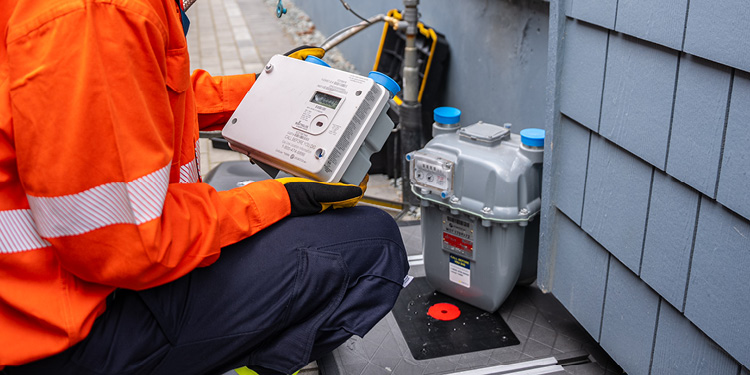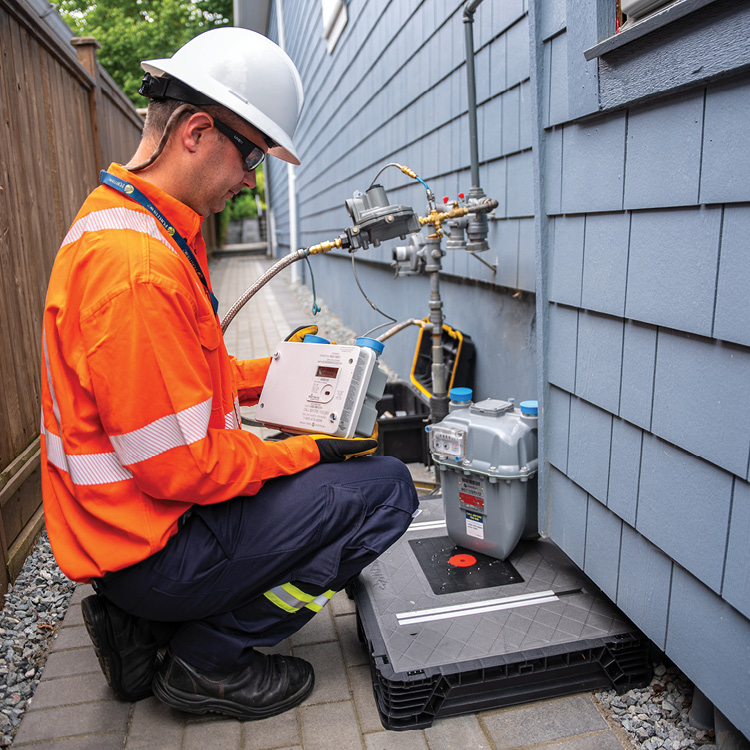Why advanced meters are the next step forward for BC’s energy system
January 14, 2020
The development of a safe and reliable energy system
The origins of our energy system can be traced to 1862, when the first streetlight was lit by Victoria Gas Company. At the time, local neighbourhoods were not illuminated by light bulbs and electricity. Instead, these streetlights were powered by manufactured gas.
During the 19th and early 20th centuries, manufactured gas was a vital source of energy for lighting and heating in much of the world. It was produced in local gas works by super-heating coal, and primarily comprised of carbon monoxide, hydrogen and methane.
A lot can change in 150 years.
Today, we all enjoy the benefits of a modern and resilient system to deliver the energy we need when we need it the most. In B.C., our homes and businesses get most of their energy from a mixture of electricity and natural gas. As a supplier of natural gas, electricity and propane, FortisBC is the province’s largest energy provider and meets up to half of local need on the coldest days.
B.C.’s energy system has helped the economy and local residents to thrive; however, it’s not one that was built overnight. It took decades of investment and new technology.
From gas-powered lights to hydropower and natural gas
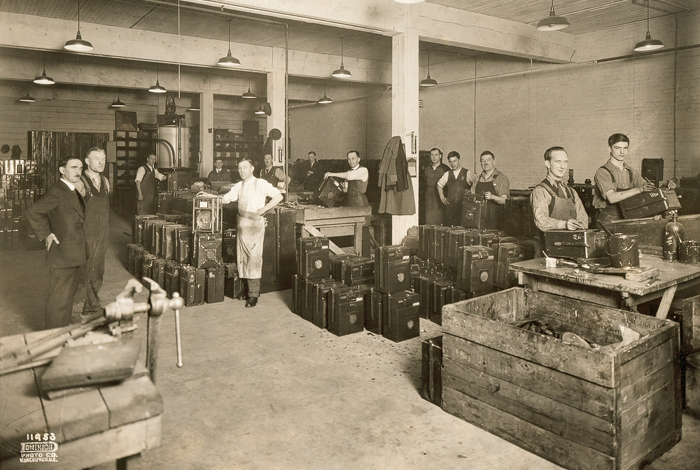
Workers at a gas meter repair shop in the late 1920s.
More than 20 years after the first gas-powered streetlamp was lit, the province’s first hydropower electricity plant was built by Nanaimo Electric Light in 1888. It would be another 15 years before City of Vancouver lights were powered by hydroelectricity, generated from the newly built Buntzen Lake Power Plant. It was the start of an energy transition.
By the middle of the 20th century, B.C. homes were largely powered by hydroelectricity and were increasingly turning to natural gas for warmth, cooking and hot water. This transition to natural gas was supported by discoveries of massive reserves in Canada as well as technological advances in processing and transportation.
Investment in new infrastructure was required, including in electrical lines and gas lines to move electricity and natural gas throughout the province. This meant building new steel pipelines to replace the cast-iron pipelines that had been used to transport manufactured gas. These new steel pipelines were a significant upgrade. They would eventually help move natural gas more than 1,000 kilometres across the province, from the abundant reserves in the northeast to the population centres in the southwest.
A step forward in how we measure gas use
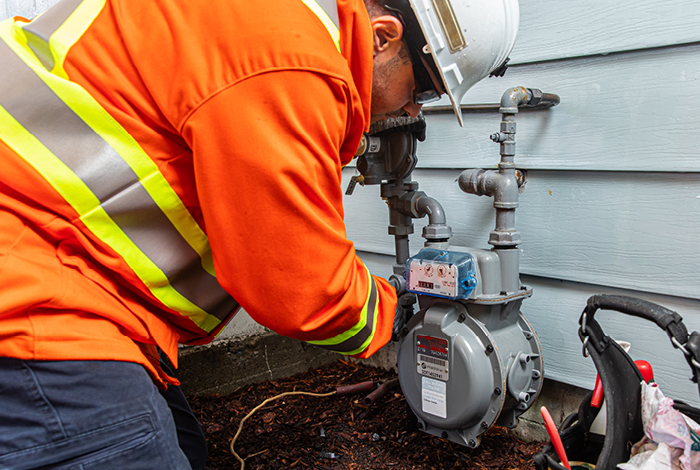
If you live in B.C., the fundamental technology of the gas meter on your home or business hasn’t changed in more than 100 years..
One thing that has not changed much is how gas use is measured in North America. The same fundamental technology that was used more than 100 years ago is still used today.
That is until now.
After successfully upgrading 130,000 electricity customers to advanced meters, FortisBC is now seeking regulatory approval on a project to upgrade its gas customers’ meters. Advanced gas meters are the latest in gas measurement technology. The battery-powered meters use soundwaves to measure gas use and send this information over an encrypted wireless network, removing the need to manually read every individual gas meter in B.C.
Customer engagement on the new meters started in late 2019, including information sessions across the province and a new website and phone line. By the start of 2020, we had already talked to more than 200 people about the new meters, answering questions, listening to feedback and explaining the benefits of advanced meters.
The benefits of advanced gas meters
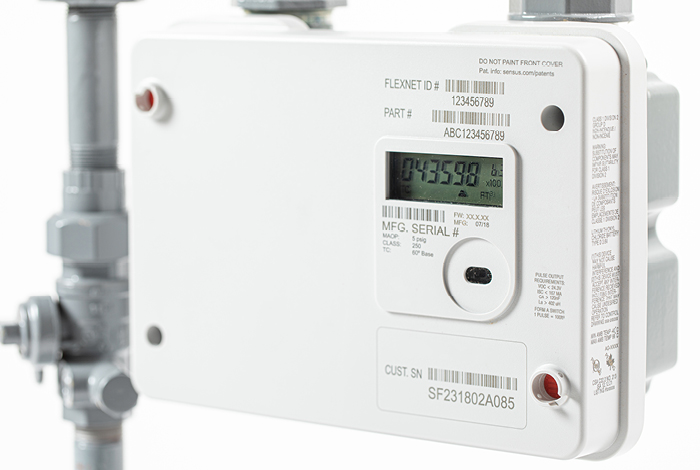
New advanced gas meters have no moving parts and are expected to last longer than existing meters.
New safety features
One of the new meters’ key advantages is the ability to better monitor and manage the gas system. This will allow new safety improvements to be made–such as the ability to remotely detect gas leaks. The new meters and new sensors installed throughout our system for the upgrade would help us better monitor gas flow in near real-time. This would allow potential gas leaks to be more quickly identified through detection of abnormal gas flow. Abnormalities could be investigated including by dispatching a technician or contacting customers. Confirmed gas leaks could be responded to remotely and more rapidly using the new meters, including in the event of an emergency.
Access to daily updates on gas use
Advanced gas meters will offer new customer benefits, such as the ability to access daily updates on energy use. The new meters will register hourly consumption information, which will be sent to us daily over the wireless network so we can calculate gas use. Customers will also be able to access this information, which will be updated daily, online. Being able to monitor how and when energy is being used will help our customers better understand and manage their gas use, as well as avoid the shock of larger than expected monthly bills.
A tool to support a lower carbon future
Another energy transition is underway, as the world moves towards a lower carbon future. We are committed to supporting the energy transition for our customers and the communities we serve.
Advanced gas meters have a role to play.
The new meters will support customer conservation efforts, empowering people to make more informed decisions when it comes to energy use, appliance efficiency and home or business retrofits. Additionally, advanced meters create cost savings by wirelessly transmitting billing information rather than requiring manual meter readings.
Just as it took investment to build the energy system we know and trust today, it will take investment in new infrastructure to build the system we need tomorrow. This includes advanced gas meters, which are part of our commitment to safety as we continue to build a more resilient gas system across British Columbia.
1Renewable Natural Gas (also called RNG or biomethane) is produced in a different manner than conventional natural gas. It is derived from biogas, which is produced from decomposing organic waste from landfills, agricultural waste and wastewater from treatment facilities. The biogas is captured and cleaned to create RNG. When RNG is added to North America’s natural gas system, it mixes with conventional natural gas. This means we’re unable to direct RNG to a specific customer. But the more RNG is added to the gas system, the less conventional natural gas is needed, thereby reducing the use of fossil fuels and overall greenhouse gas emissions.

